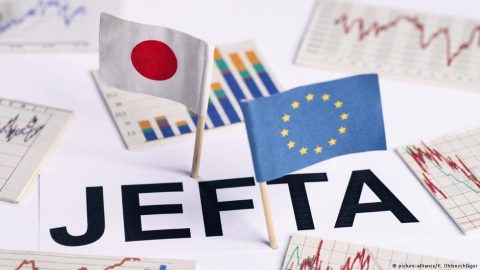With the U.S. backing out of the Trans Pacific Partnership, the China-U.S. trade war, and Brexit, it’s seemed as though protectionism was the only game in town. Yet Japan and the EU have shown there is still a lot of appetite for free trade — indeed, they’ve created the largest free trade zone in the world.
A free trade agreement between Japan and the EU entered into force on February 1, covering 635 million people and almost one-third of the world’s economy.
Dubbed the world’s largest free trade agreement, the EU-Japan Economic Partnership Agreement removes duties on almost all agricultural and industrial products and opens up the service sector and procurement. It also moves to eliminate non-tariff barriers to trade.
The numbers are staggering. The EU has lenient internal trade agreements, but adding the world’s third largest economy into the fold will have huge respective impact and will cause countless knock-on effects across the globe.
While this deal will make trade easier in a traditionally liberal sense, there are still protections and efforts to make sure that the deal isn’t focused solely on reducing barriers at any cost.
For the first time, the trade agreement includes countries’ Paris climate deal commitments.
The text also addresses sustainable development and sets standards for labor, safety, environmental and consumer protection.
By breaking down crude barriers like tariffs, while also creating unified labor and environmental regulations, Japan and the EU are investing in a holistic and farsighted approach to international trade. The U.S., China and the UK can’t seem to figure this out right now, but they may find that while they’re dithering, the rest of the world is zooming past them.

No comments:
Post a Comment